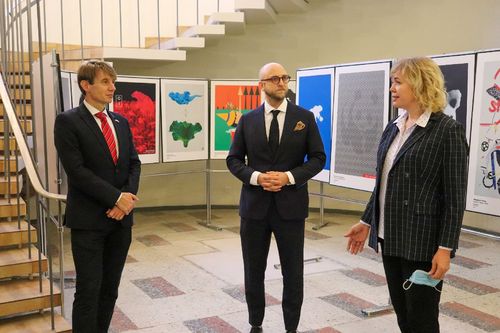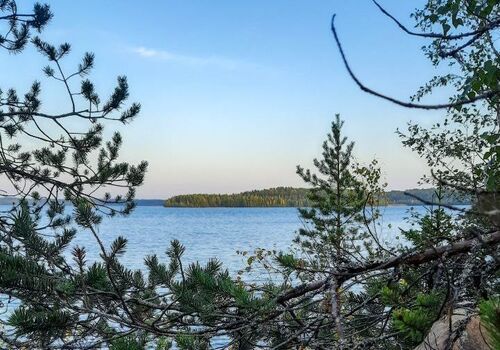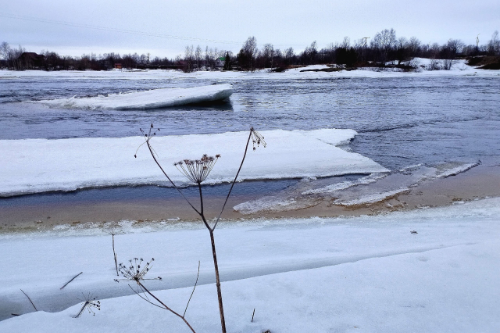The Lahti environmental poster exhibition at KarRC RAS is part of the international Nordic Weeks festival in Petrozavodsk (December 7-26, 2021). The theme of the festival this year is the environment and sustainable development. The program includes events on design, fashion, urban studies, movies and art, through which people of Petrozavodsk will be introduced to the experience of Finland, Sweden, Denmark, and Iceland in green consumption, urban development, and environmental protection.
Guests of the exhibition launching event were welcomed by KarRC RAS Director General Olga Bakhmet, Director of the Petrozavodsk Office of the Consulate General of Finland in St. Petersburg Johannes Puukki, and Consul General of Norway in St. Petersburg Richard Scarborough. The event was also attended by Deputy Director of the Danish Cultural Institute in St. Petersburg Andrey Anisimov and Assistant for Culture at the Consulate General of Finland in St. Petersburg Julia Puhilas.
Lahti Environmental Poster exhibition can be visited in the lobby of the KarRC RAS Institute of Linguistics, Literature, and History (11 Pushkinskaya St.). Opening hours: 12:00 to 17:00 Monday through Saturday. Free of charge. QR code or negative PCR test required.
News

December 8, 2021
A Lahti environmental poster exhibition was launched at the Karelian Research Centre RAS on December 7, as part of Nordic Weeks in Petrozavodsk. It exhibits 22 posters on global environmental issues selected from among several thousands of works by participants of the International Poster Art Festival.
See also:

July 7, 2025
A successful introduction: the zander has settled down in Lake Sundozero and continues to spread
Scientists of the Institute of Biology KarRC RAS have published the results of long-term observations over the population of the zander (or pikeperch) introduced to Lake Sundozero more than a half-century ago. They confirm the species has become naturalized. Maintaining the population requires regulation of harvesting, protection during spawning, and tending of spawning grounds.
Scientists of the Institute of Biology KarRC RAS have published the results of long-term observations over the population of the zander (or pikeperch) introduced to Lake Sundozero more than a half-century ago. They confirm the species has become naturalized. Maintaining the population requires regulation of harvesting, protection during spawning, and tending of spawning grounds.

June 26, 2025
Ice-related phenomena on rivers emptying into the White Sea now last three weeks less than 60 years before
Ice on northern rivers now forms later while ice-off occurs earlier. Karelian scientists confirmed this having analyzed 64 years of marine and meteorological data from the estuaries of rivers draining into the White Sea along its western coast. Climate change has bit three weeks off the ice-covered period on these rivers. The reductions have been the most significant in the last 30 years, aligning with global warming trends in Arctic water bodies.
Ice on northern rivers now forms later while ice-off occurs earlier. Karelian scientists confirmed this having analyzed 64 years of marine and meteorological data from the estuaries of rivers draining into the White Sea along its western coast. Climate change has bit three weeks off the ice-covered period on these rivers. The reductions have been the most significant in the last 30 years, aligning with global warming trends in Arctic water bodies.

June 23, 2025
Citizen science and web technologies help researchers study insects of Karelia
More than 30 insect species not encountered in Karelia previously have been revealed by entomologists from KarRC RAS during their expeditions and using data communicated by active participants of the iNaturalist portal – an open platform for collecting biodiversity data.
More than 30 insect species not encountered in Karelia previously have been revealed by entomologists from KarRC RAS during their expeditions and using data communicated by active participants of the iNaturalist portal – an open platform for collecting biodiversity data.



